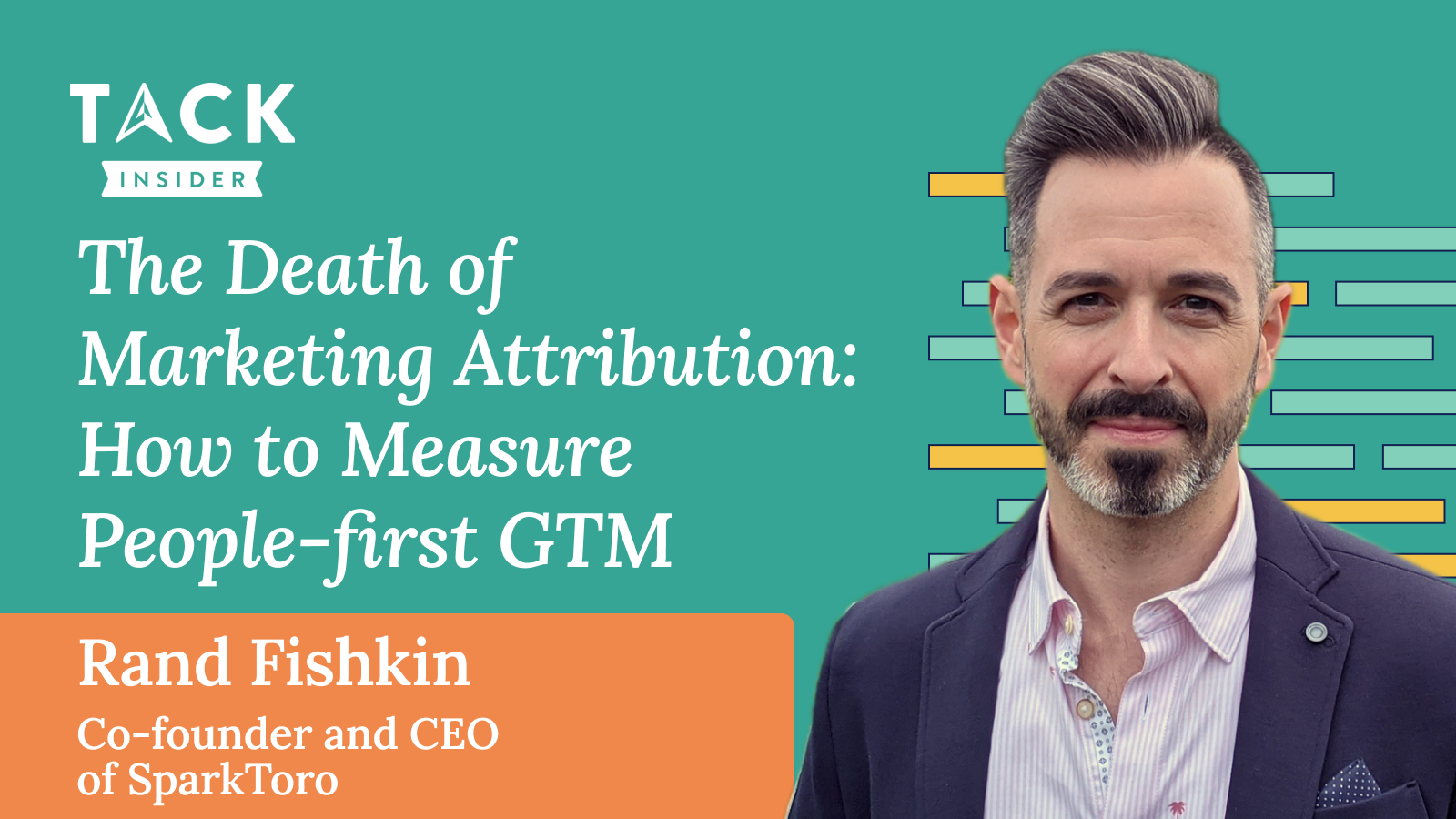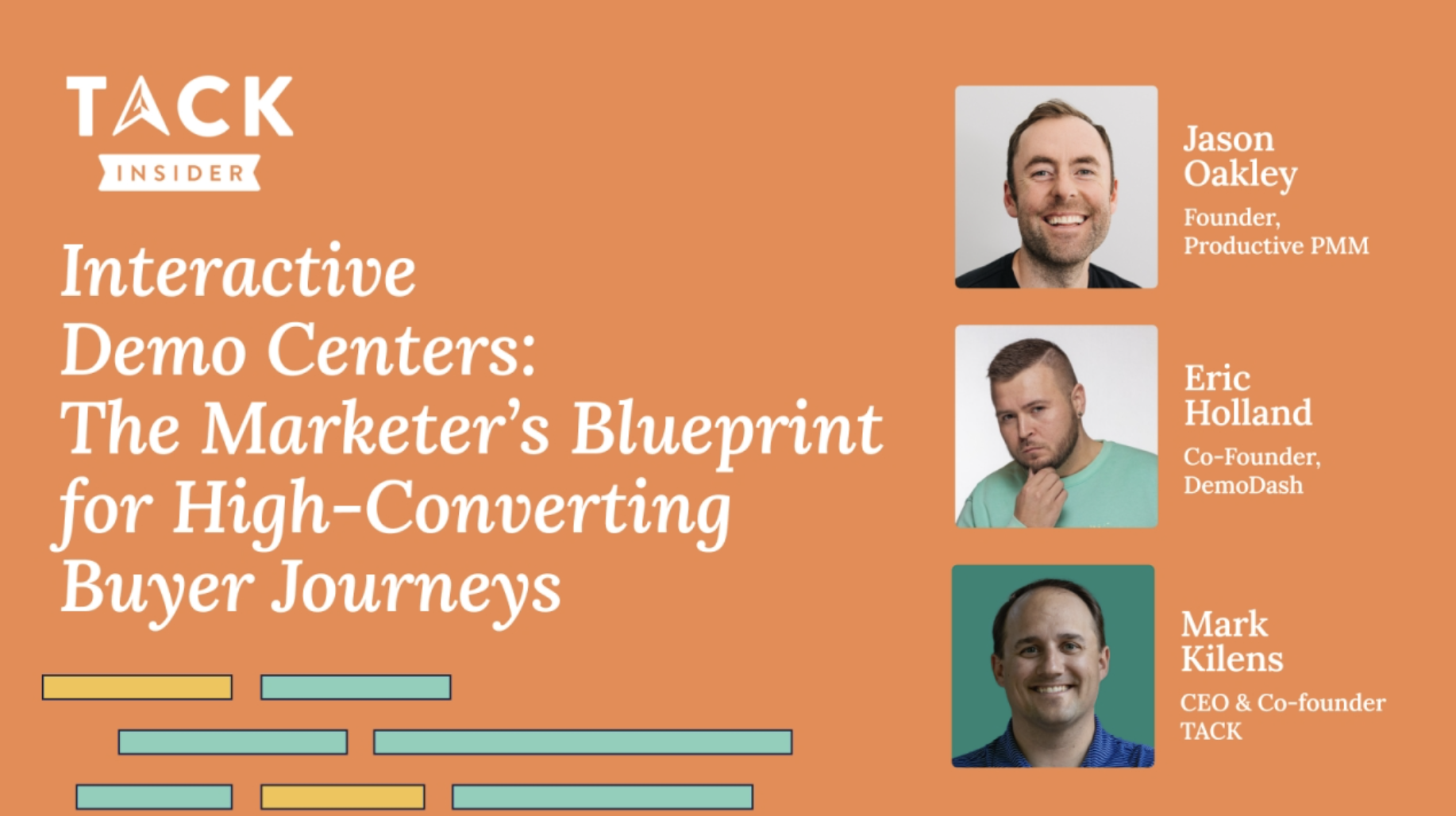Hosted by: Mark Kilens, Founder at TACK
Speakers: Rand Fishkin, Co-founder & CEO, SparkToro
Overview
Digital attribution: the backbone of modern marketing dashboards, is breaking down. From the demise of third-party cookies to dark social and zero-click platforms, it’s becoming nearly impossible to track a full buyer journey. In this session of TACK Insider, it will be explained why attribution is no longer reliable, and what to do instead. This isn’t about giving up measurement. It’s about redefining it for a world where your best work may never get "credit".
Check out the full slides of the webinar
The Death of Attribution: What Broke and Why It Matters
Attribution used to be marketing’s trump card. You could point to data that showed exactly which campaigns drove sales. That era is over.
- Third-party cookies, the core of cross-channel tracking, are being phased out (with Chrome leading the charge).
- Consumer behavior has shifted to multi-device journeys and privacy-first tools like ad blockers and analytics blockers.
- Even platforms like LinkedIn, Slack, and TikTok now obfuscate referral traffic—turning social into a “dark” channel.
- Search is no longer a reliable source of keyword data; most organic clicks are disappearing into zero-click experiences.
Put simply: attribution models can’t survive a 30–40% data loss. Yet that’s now the norm.
Measurement ≠ Attribution
There’s a critical distinction Fishkin makes: measurement is not attribution. You can still measure outcomes (traffic, lift, engagement), but tying those outcomes directly to a channel or tactic with confidence? That’s pseudoscience.
- Attribution assumes you can track a full journey from first touch to purchase. In today’s environment, you can’t.
- Measurement tracks impact, lift, and engagement—without pretending to know exactly what caused the sale.
- Marketing today requires intuition, not just dashboards.
“The best marketing opportunities are the least measurable.”
How Big Tech Is Gaming Attribution
Platforms like Google and Meta now prioritize internal content and down-rank external links. Fishkin calls this the “green flyer” problem: they leap in front of conversions that would’ve happened anyway just to claim credit.
- Performance Max campaigns strip away control and visibility while promising “optimized” spend.
- Search results are engineered to deliver answers (not clicks), collapsing organic opportunities.
- Zero-click environments and dark social make it impossible to trace back influence to individual efforts.
It’s not that attribution never worked—it’s that today, the incentives for platforms are misaligned with marketers’ needs.
Three Alternatives to Broken Attribution
Fishkin offers a framework for moving forward in an attribution-hostile world.
1. If You Must Spend on Ads, Audit the Lift
Stop assuming ROI—test it. Pause paid campaigns and monitor changes in conversions over 30–90 days. You might find that most attributed conversions happen anyway.
2. Build a “Hard to Measure” Dashboard
Borrow from pre-digital playbooks. Use time-series or geo-based testing to estimate impact:
- Run campaigns in specific regions and compare lift to control regions.
- Track brand search volume and web traffic over time.
- Build internal benchmarks instead of chasing false precision.
Tools like BrandOps are emerging to support this style of measurement without claiming perfect attribution.
3. Embrace Vanity Metrics and Long-Tail Influence
At SparkToro, Fishkin ignores attribution entirely. Instead, he focuses on:
- Showing up where audiences already are (e.g., podcasts, newsletters).
- Creating content that resonates and invites curiosity.
- Measuring “big stuff” like total traffic and branded search over time.
This approach accepts some inefficiency but delivers stronger brand equity and durable relationships.
The Attribution Lie Is Costing You More Than You Think
Fishkin warns that over-reliance on attribution leads marketers to underinvest in the most powerful tools they have—organic content, thought leadership, community, SEO, and social presence. These channels aren’t dead; they’re just invisible to attribution software. And pretending otherwise only benefits ad platforms.
He shares examples of companies like Airbnb, Uber, and P&G who reduced ad spend and saw no meaningful drop in performance—proving that many campaigns are just green flyer handouts.
So What Should You Do?
- Don’t blindly trust vendor dashboards—test and validate results with your own data.
- Educate stakeholders on the limits of attribution and the difference between measurement and influence.
- Invest in creative, relationship-driven marketing that your competitors can’t easily copy.
Marketing is returning to its roots: earn trust, show up consistently, and measure what matters—even when it’s not perfectly trackable.
Key Takeaways
- Attribution is no longer reliable due to cookie loss, dark social, and zero-click behavior.
- Measurement and attribution are different—don’t confuse correlation with causation.
- Big tech platforms optimize for ad spend, not for your long-term marketing success.
- Brand and content marketing still work—they’re just harder to measure directly.
- Build internal confidence around intuitive, lift-based models that prioritize reach and resonance.





